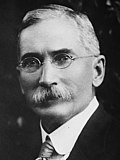This article needs additional citations for verification .(December 2009) |
| |||||||||||||||||||||||||||||||||||||||||||||
All 148 seats in the House of Assembly 75 seats needed for a majority | |||||||||||||||||||||||||||||||||||||||||||||
|---|---|---|---|---|---|---|---|---|---|---|---|---|---|---|---|---|---|---|---|---|---|---|---|---|---|---|---|---|---|---|---|---|---|---|---|---|---|---|---|---|---|---|---|---|---|
| Registered | 461,820 | ||||||||||||||||||||||||||||||||||||||||||||
| Turnout | 75.34% ( | ||||||||||||||||||||||||||||||||||||||||||||
| |||||||||||||||||||||||||||||||||||||||||||||
 Results by province | |||||||||||||||||||||||||||||||||||||||||||||
| |||||||||||||||||||||||||||||||||||||||||||||
| Part of a series on the |
| Politics of South Africa |
|---|
 |
General elections were held in South Africa on 12 June 1929. [1] The National Party under J. B. M. Hertzog won an outright majority in the House of Assembly. Hertzog had the opportunity to form a government without the aid of the Labour Party. In fact the Pact government continued, with two ministers from the Creswell Labour faction remaining in office. The National Party remained the dominant party, for its second consecutive term.
Contents
Due to the split in the Labour Party, just eight MPs were elected for the party, of whom only four sat on the government benches. [2] The leadership disputed between Colonel Frederic Creswell (of the Creswell Labour faction) and Walter Madeley (from the National Council Labour faction) following the split.


